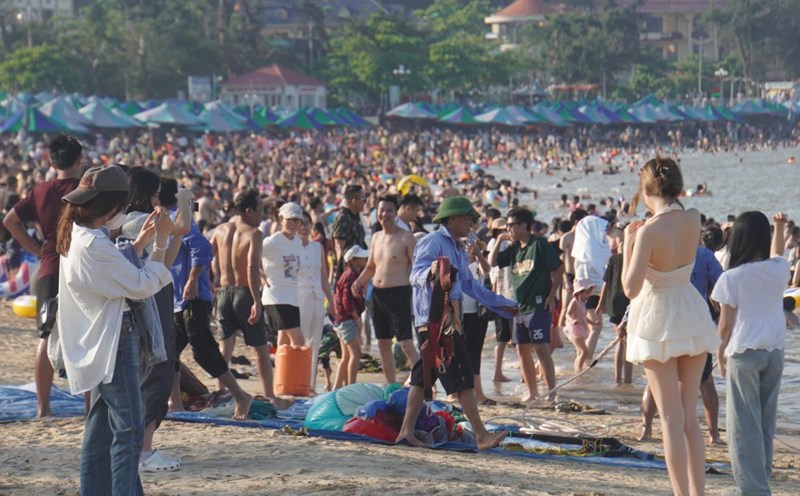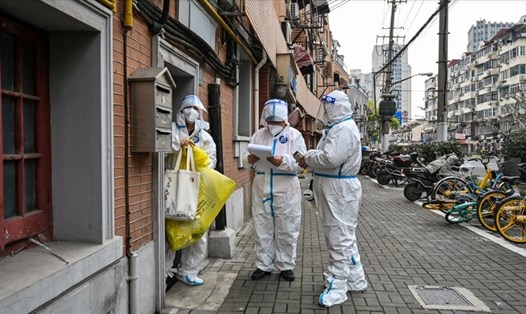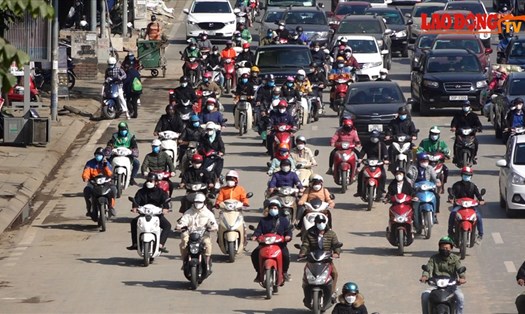Recently, the Government issued Resolution 48/NQ-CP on strengthening the assurance of traffic order and safety and preventing traffic congestion in the period of 2022-2025. Accordingly, the People's Committees of the cities (Cities): Hanoi, Hai Phong, Da Nang, Can Tho, Ho Chi Minh City, are studying and developing a project to zoning and limit the operation of motorbikes in accordance with the infrastructure and service capacity of the public passenger transport system, towards a roadmap to limit or stop the operation of motorbikes in some districts after 2030.
Before Vietnam, countries in the Asia region such as China and Indonesia also had to "resolve the problem" of limiting motorbikes and developing public transport.
Applying the ban on motorbikes
As in Vietnam today, motorbikes are a convenient, fast and low-cost personal vehicle, and have long been considered a popular means of transportation and play an important role in the lives of Chinese people. However, it also brings many problems.
According to a 2020 study by Yuntao Guo, a senior fellow at Dong Te University, Shanghai, and Jian Wang, a graduate student at Dongxi University, there were more than 100 million motorbikes operating in China in 2014, compared to 200,000 in 1981. The large number of active motorbikes has caused many problems for Chinese traffic, including traffic jams and robberies.
To limit issues related to motorbikes, Chinese authorities have begun to issue restrictive policies, including stopping new motorbike registrations, banning motorbikes from operating on main streets or central areas, as well as banning people riding motorbikes from other provinces into the city.
The most drastic of these is the complete ban on motorbikes throughout the city, which was introduced by Beijing in 1985. The Chinese capital has become the first city in the country to implement the measure. By the early 1990s, more and more cities were following Beijing's model, and by 2020, about 185 cities in China had implemented a ban on motorbikes.
Planners say the ban will bring two main benefits, including limiting traffic accidents and reducing robberies, while promoting more environmentally friendly forms of transportation such as walking, cycling or using public transport.
In 2014, Indonesia's capital Jakarta also experimented with banning motorbikes on two main roads before officially implementing it. On February 17, 2014, these two routes became deserted for motorbikes when a new ban on testing this type of vehicle took effect until January 17, 2015. The Jakarta Globe reported that the city has mobilized about 1,700 police, military and traffic department staff to carry out the 24/24-hour ban.
The problem of banning motorbikes
An article in the Chinese journal of Information Technology and Transport systems in 2009 cited a research work showing that in addition to the benefits of transportation, the ban on motorbikes also increases the financial burden on poor people, especially illegal workers in big cities.
Research in 2020 by experts Yuntao Guo and Jian Wang shows that in addition to the impact of reducing traffic accidents, the ban on motorbikes is not very effective. Accordingly, while low-income people are forced to switch to walking or using public transport, about 25% of people riding motorbikes have started to switch to using cars to work after motorbikes are banned.
In addition, there are some economic problems arising as motorbike businesses are gradually pushed to bankruptcy. A large number of immigrants who have made a living by driving motorbike taxis before do not know what to do when the tool to make "bread and shirt" is banned from circulation.
The ban has caused the business activities of the bicycle market to skyrocket, while the taxi service industry has also "taken advantage" of raising prices. Not only that, the paradox also occurs when the number of motorbike robberies decreases, but the number of pickpocketing and theft on bus routes increases.
Solutions have been implemented
The accompanying support policy is an important factor to implement the roadmap to ban motorbikes. This process needs to be carried out in parallel with the expansion of inner-city bus routes and public transport. For those who have to hand over motorbikes, the Chinese government provides an average of $180 (value at handover time) per vehicle.
In Indonesia, after testing, the Indonesian government approved a plan to build 6 high- toll expressways along the central area of Jakarta to reduce traffic pressure as the number of cars increased.
Along with that, where to keep motorbikes after the ban also became a problem. To implement the ban, the city of Guangzhou has established about 40 locations to hold hundreds of thousands of vehicles handed over by people, and spent 70 billion yuan over 5 years to upgrade equipment and transportation systems.
Some special job fairs have also been opened in China to help find jobs for those who have driven motorbike taxis or in areas related to motorbikes. Special mandatory institutions are also implemented with the aim of implementing the policies in the most thorough and effective way.










